Growing Blog
Mushroom Growing Kits – Complete Guide, Reviews and Top Picks
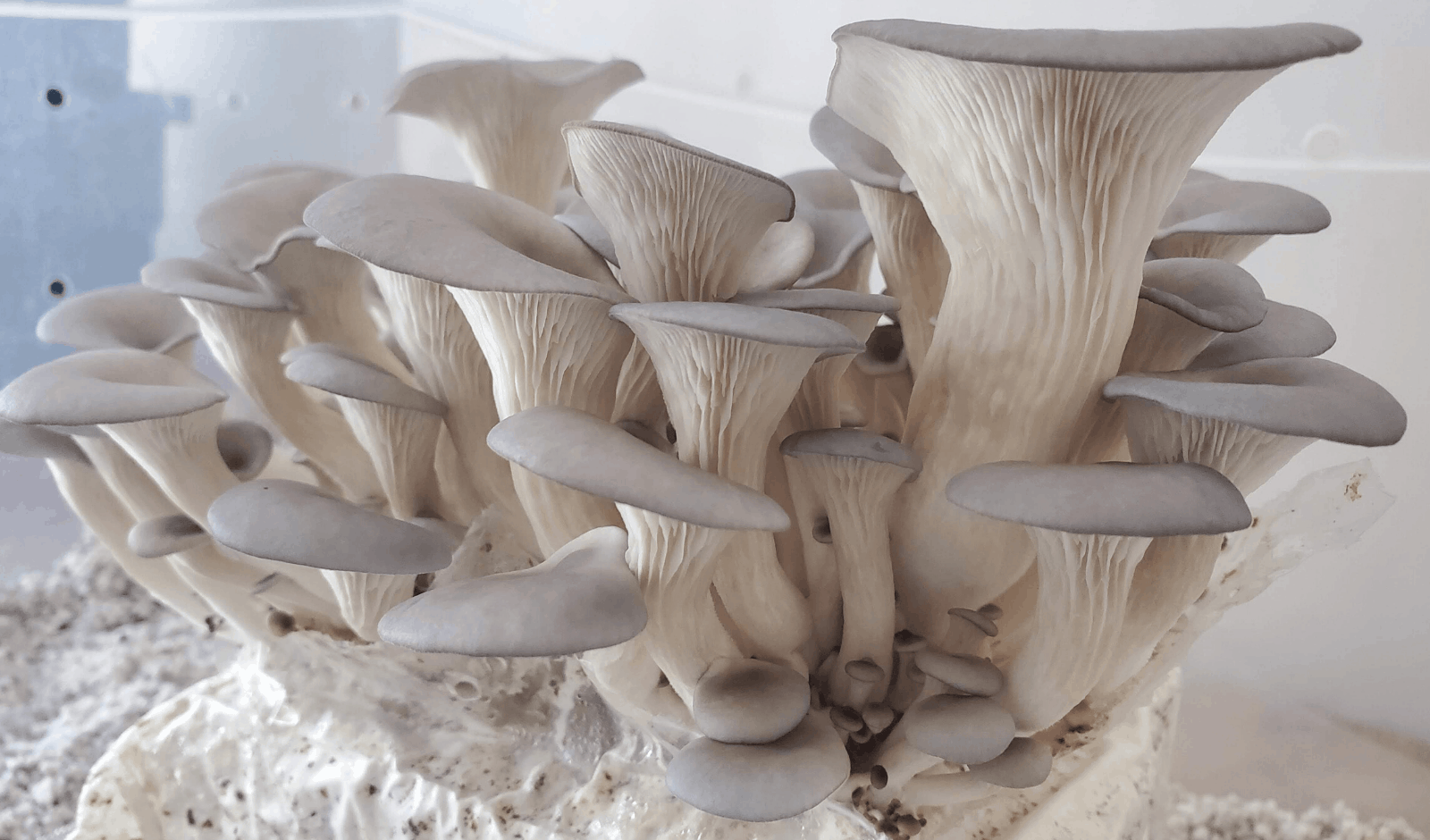
Buying a mushroom growing kit is by far the easiest way to start growing mushrooms at home.
That’s because edible mushroom grow kits are totally beginner friendly- requiring almost no special skills, tools, or other equipment. Other than the mushroom kit itself, you probably already have everything you need at home.
These easy to use mushroom kits allow new growers to get a feel for what it’s like to farm mushrooms without having to dive too deep into the hobby.
So are these kits worth buying?
If you can find a high quality kit, then yes- absolutely. There are loads of different branded mushroom kits available, and lots of different species of mushrooms you can grow… so it’s worth it to do a little bit of research before diving in.
Although I enjoy growing mushrooms from scratch, I still wanted to try out one of these kits myself to see how effective and easy they really are.
I was definitely skeptical at first- but ended up having a great experience growing mushrooms from a kit, and think they are definitely worth a try for new growers.
What is a Mushroom Grow Kit
A mushroom growing kit is essentially a pre-colonized “fruiting block” which has not yet been put into conditions that make it want to fruit mushrooms.
The mycelium covered block is typically contained in a mushroom grow bag, which can sit dormant for quite some time, especially if it’s kept cool in the fridge.
You can buy grow kits for a variety of different types of mushrooms, although some species make for better kits than others. One of the most common types of mushrooms you will find in a grow kit is Pleurotus ostreatus – the regular ol’ “oyster mushroom.”
Oyster mushrooms are pretty resilient to contamination, they fruit relentlessly, and they can grow on a whole whack of different substrates.
They are super tenacious, and can fruit mushrooms even if conditions aren’t picture perfect- making them an excellent choice for a kit.
Oysters also grow really quickly, which increases the chances of success. Most grow kits only require a few simple steps and minimal maintenance, although the chances of success and potential harvest size increases greatly if the mushroom block is properly prepared and placed in ideal conditions.
New to growing mushrooms?
Make your first grow successful with an easy to use kit! Three easy steps:
- Soak the kit in water.
- Scrape back some of the mycelium.
- Keep moist and near indirect light
Get your kit here!
Oyster Mushroom Kit Review
The mushroom grow kit I decided to try was the Back to the Roots Mushroom Mini Farm. This “mini farm” is an oyster mushroom grow kist which produces Pearl Oyster Mushrooms– a tasty, fast growing species that can withstand some neglect and still produce good results.
A perfect option for the home grower!
The kit itself is quite small, with the actual fruiting block weighing less than 2 lbs. With this low amount of substrate, I wasn’t expecting a whole ton of mushrooms- although the point of the kit is more to experience the process of growing mushrooms rather than for getting a huge harvest.
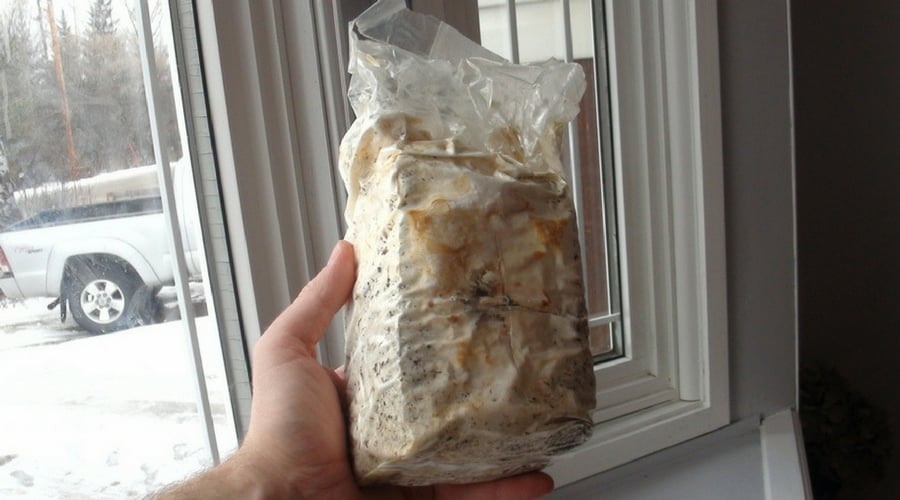
First Impressions
Full disclosure: I bought the kit from the grocery store and left it in the fridge for a number of months before I actually went to use it. I thought this might have an adverse effect on the kit, although, as you will see, the results were still actually quite good.
Opening the box, you can see that the kit is a fully colonized fruiting block in a small grow bag. Back to the Roots says that the substrate is recycled organic material, although I can’t quite tell exactly what it is.
The block passed the initial sniff test (to see if it’s contaminated), and was looking good- smelling just like beautiful oyster mycelium should.
There was quite a bit of orange metabolite in the bag, but this is not contamination and is usually nothing to worry about.
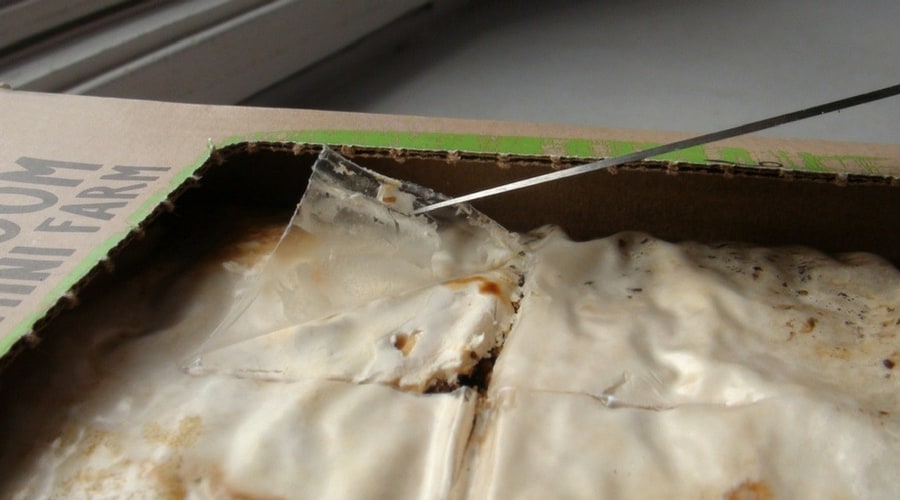
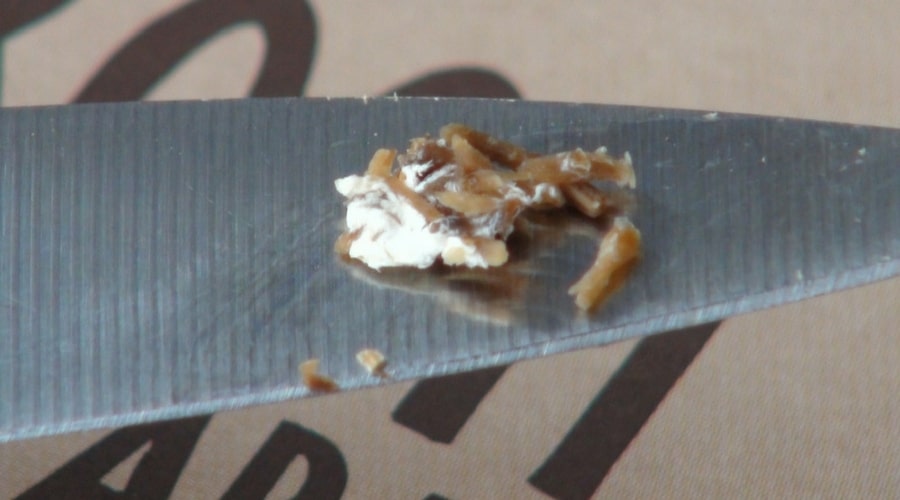
Following the Instructions
The instructions are dead simple, and really seem to cater to new growers who are unaware of the complex terminology involved in growing mushrooms.
Basically, scrape, soak and water.
In other words,
- cut a hole in the bag and rough up the mycelium,
- soak in water to re-hydrate and shock
- keep humid so that mushroom pins can form
One minor gripe I had was that the kit refers to the mycelium as “soil”. Although this is kind of a good analogy, it’s not at all accurate. But, considering most people buying these kits aren’t hardcore mushroom growers, I totally understand!
As per the instructions, I cut a small “x” in the front of the bag and scraped back some of the mycelium.
This “roughing up” of the outer layer reactivates the mycelium, and is helpful to initiate new growth and pinning.
I soaked the block face down in a bowl of water for 12 hours. The block floats, so if you wanted to, you could consider placing something heavy on top of the block to sink it. I opted to just let it float, in hopes of the block soaking up the water.
This is an important step.
Mushroom fruiting bodies are up to 90% water, and pretty much all of that moisture needs to come from the fruiting block itself. If your mushroom block does not contain enough water, it will fail to fruit, or quickly abort and new mushrooms that do form.
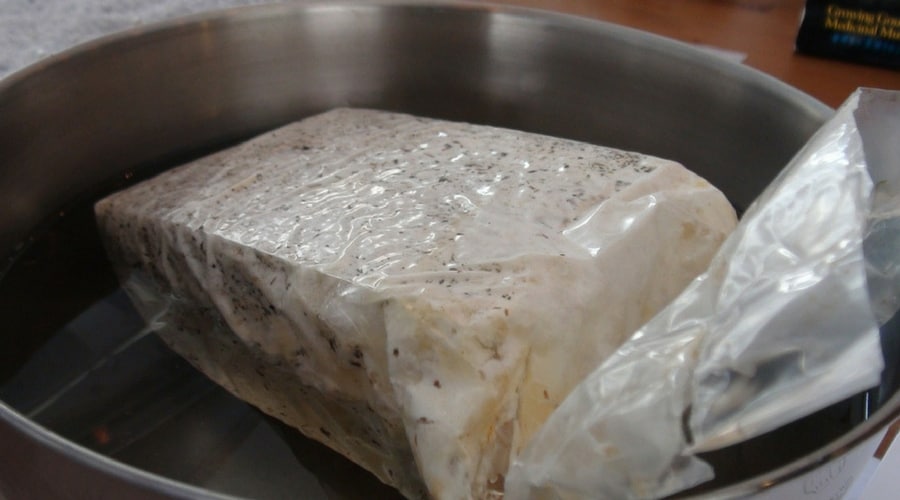
Fruiting the Block
The third step in the instructions is “water”, and the kit instructs us to “sprinkle 2-3 teaspoons of water per day on the scraped area until mushrooms are fully formed.” Again, these are good instructions for those who are new to growing mushrooms, but essentially, the kit just needs to be placed in a humid environment with indirect light. This is no different than a typical fruiting environment used when growing mushrooms from scratch.
I opted to leave the bag out of the box and place the kit in a shotgun fruiting chamber. I am sure this kit can be grown on your countertop without the SGFC, and that is the intention of the kit. Also, Pearl Oysters are tenacious fruiters in general.
That being said, the chances of your block drying out and not fruiting at all are higher if you don’t place it in a controlled environment like a SGFC. Plus, shotgun fruiting chambers are easy to make and can be used for any future mushroom project.
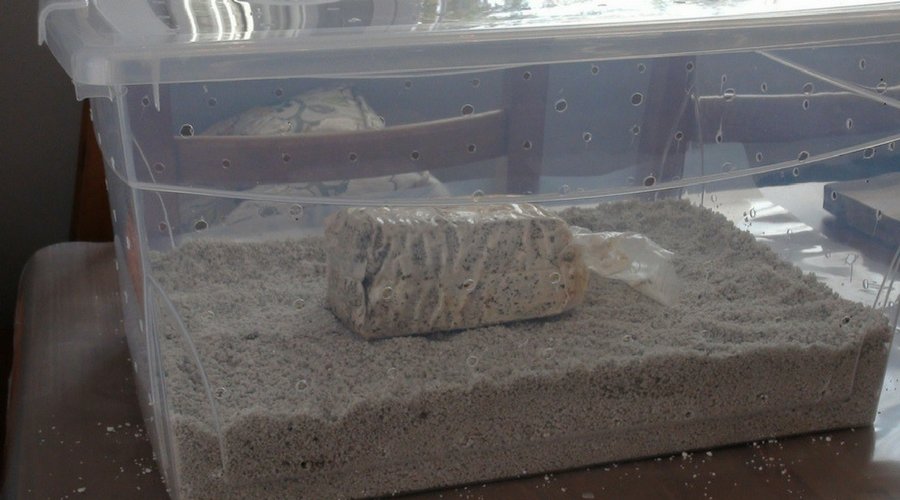
Seeing Results!
It took about 15 days before the first pins showed up. This was longer than expected. It may be because the block was left in the fridge for so long before use. Other than that, I am not sure why.
The SGFC was kept consistently humid, the light was indirect, and the temperature was between 16-19 deg C. I did not “spray” the block directly as was instructed, and it is possible that this delayed fruiting, although direct misting before pinning is not a technique I generally use.
Once the pins arrived, growth was quite quick – the mushrooms were ready for harvest only 7 days from the first site of a pin. Again, this rapid growth is quite common for Oyster mushrooms in general and Pearl Oysters in particular.
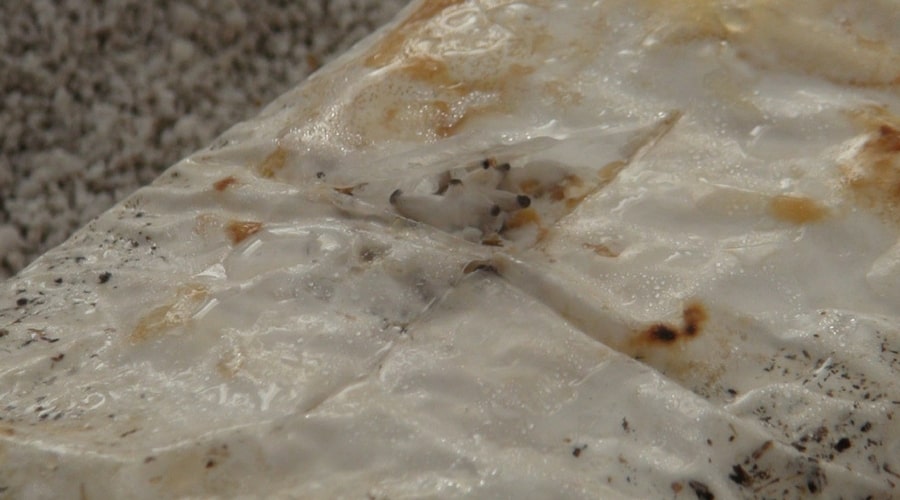
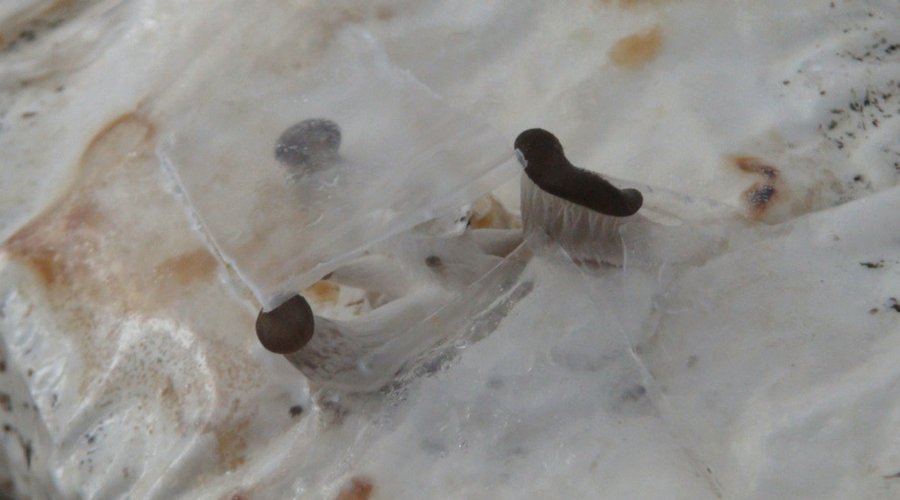
From Fruiting to Harvest
During this time, the SGFC was misted and fanned twice per day and the fruits formed quickly.
For me, this is the best part about growing mushrooms.
Every morning you get to wake up and go look at your mushrooms. Often they will have doubled in size overnight.
It surprises and delights me every time.
Although the mushrooms did pin and fruit just fine, there were only three main fruiting bodies that emerged, and the kit failed to produce the cluster I was hoping for. You can never really predict what form your mushroom fruit bodies are going to take- which is part of the fun – but you always hope for a huge flush.
Still, the mushrooms that did grow were a nice looking bunch. The stems were a little fatter and longer, and the caps were a little smaller than I would have hoped. Typically with oysters, this is a sign of a lack of fresh air. Although I opened the lid of the SGFC on average twice a day to fan and mist, it probably would have helped to do it a little more often.
It really can’t be underestimated how much fresh air oysters need in order to form large capped clusters.
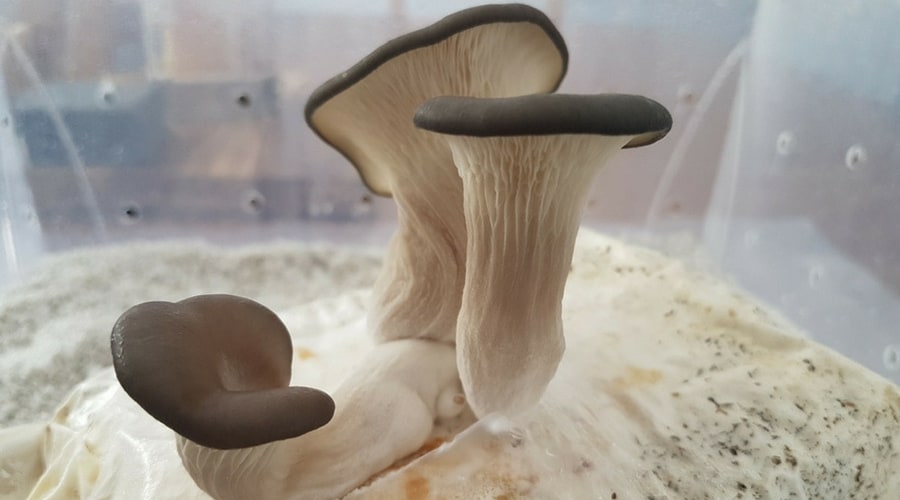
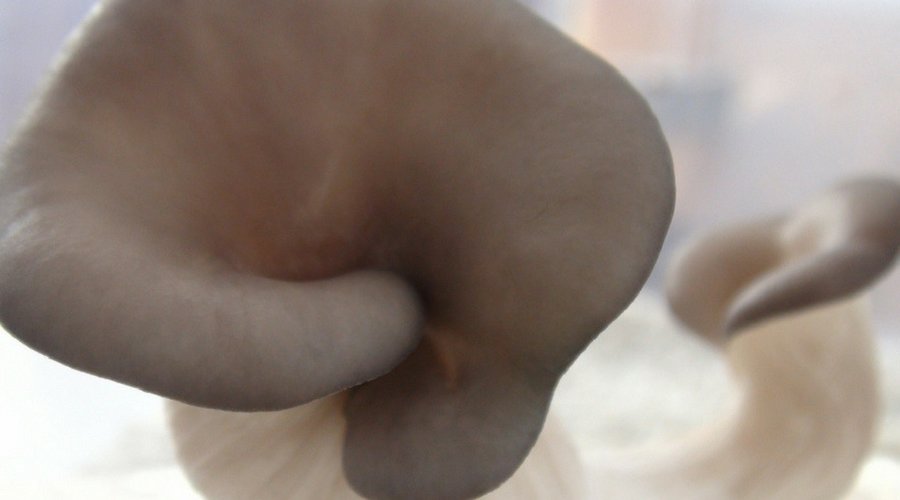
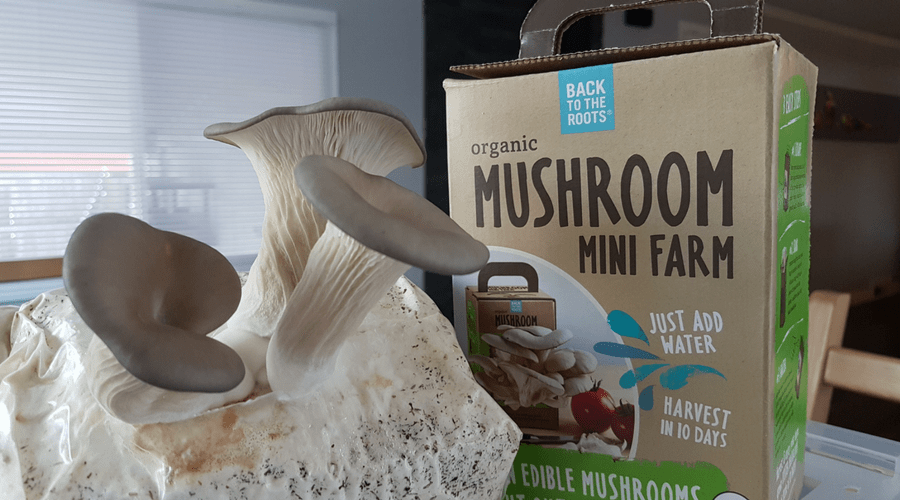
Harvest Time!
Once the oysters grew to a reasonable size, I decided to harvest them. The box says that they are ready to harvest once they stop doubling in size every day, but this isn’t really the best indicator in my opinion.
With oyster mushrooms, the best time to harvest is usually right before the caps start to curl up. This indicates that they are ready to drop their spores, and once this happens, they are past their prime.
I probably harvested the oysters a tad early, but I was excited to try them out! Plus, oysters can go from too early to pick to past their prime in no time, so it’s better to be a little early than way late.
You can harvest the mushrooms by cutting them off the block at the base of the stem with a sharp knife. Try to get as much off as possible, especially if you are going for a second flush. Old dying stems left over on a fruiting block are common spots for contamination to get a foothold.
I only ended up getting 79 grams (just under 3 ounces) of fresh oyster mushrooms on the first flush. Even at that, a good amount of the weight was thick stem, which is quite chewy and usually tossed aside.
Although this seems low- and it kind of is- I was still pretty satisfied. The point of these kits is just to experience growing your own mushrooms at home in the easiest way possible- and in that respect the kit was a slam dunk.


Cooking the Mushrooms
Fresh, homegrown oyster mushrooms are delicious and better than anything you can get at the grocery store. There are a million ways that you can enjoy them. My favorite way is to simply fry them in a pan with butter, garlic, and a bit of pepper.
They fry up pretty quick, and loose a lot of size when cooking. As mentioned above, the cap is the best part of the oyster mushroom, as the thick stems can be chewy and not all that tasty. Your experience may be different though, so it may be worth giving the stem a try if you have never eaten it before.
I used these particular mushrooms to greatly improve a pizza, and yes- it was fantastic!
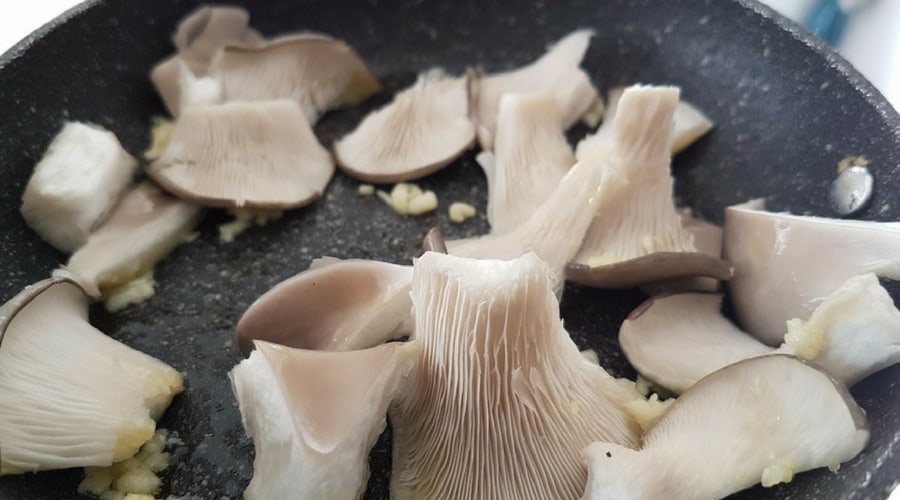
Use Again For More Mushrooms
After you harvest the mushrooms, don’t throw out your block!
You could always try for a second or even third flush. Some people have reported more than 5 flushes from a single kit! All you have to do is soak your block again to rehydrate it, and then place it back in the fruiting environment. It will take a while for the mushrooms to pin again, you might have to wait up to two weeks.
It is always possible that it will contaminate as well, so keep an eye out for green mold. If it shows up, try to cut it off. If it gets overly moldy, then it’s time to throw it out. Some people have reported more than 5 flushes from a single kit!

Top Picks For Other Kits
There are lots of other mushroom kits available, so you can try growing different species… because who just wants to grow oysters all the time?
Shiitake Mushroom Growing Kit
If you’re interested in growing something a little more advanced, you might want to consider buying a Shiitake mushroom kit.
Growing shiitake is a little different than growing oysters. They work well in kits though, because they require a lot less fresh air and can tolerate low humidity- similar to what you would need to grow shiitakes on your kitchen counter.
A good choice is this shiitake mushroom kit from Cascadia mushrooms.
These kits are the same as the fruiting blocks that they grow on their farm in Washington. You should be able to get multiple harvests from this fast growing strain of shiitake, for up to three months. Full instructions on how to grow your very own shiitake mushrooms are included with the kit.
Lion’s Mane Growing Kit
I’ll admit, Lion’s Mane is probably my very favorite mushrooms to grow.
They are also one of the easiest, and one of the most delicious… a perfect candidate for a beginner growing at home!
For Lion’s Mane, as long as the humidity is above 60% RH, you can simply cut “x’s” in the side of the bag and wait. No need for constant misting, and checking on the block every day. I have had Lion’s Mane grow in a garage, in the dark, without even paying attention at all.
I ended up with a beautiful huge cluster of Lion’s Mane, perfect for the dinner table.
If you have never tried Lion’s Mane before, you will be absolutely delighted by how tasty and versatile they are. They also have some incredible health benefits, with many people seeking out this mushroom for its brain boosting abilities.
Check out this Lion’s Mane Growing Kit from North Spore.
You should be able to get a number of flushes with minimal effort. They send instructions with the kit, and even guarantee the first harvest.
The instructions recommend building a “fruiting chamber” with a bag, which is good practice to get humidity… even though depending on where you live you may not need it.
Button Mushroom Growing Kit
Of course, the most familiar mushroom for almost everybody is the classic button mushroom.
That’s because they’re delicious, versatile, and can be added to any meal! Unlike other gourmet mushrooms though, they are relatively cheap and easy to find at any grocery store.
Still, it’s super fun to try and grow your own, fresh and organic!
Mushroom Adventures has been selling these kits for quite a while. The white button mushroom kit comes as totally colonized compost substrate, covered in a casing layer. Like the other kits, they are ready to fruit, and you should see mushrooms in the first 10 days.
Mushroom Kits That Don’t Really Work
Although using a kit makes growing mushrooms at home quick and easy, don’t be fooled into thinking that all mushrooms can easily be grown at home. Some mushrooms simply won’t be wrangled into our desire to be easily cultivated.
Morel Mushroom Kit
Morel kits aren’t as simple as other kits, and don’t come on ready to fruit blocks. Instead, these “kits” are just morel spawn that needs to be introduced to a suitable environment. This is similar to how morel mushrooms propagate in the wild. It can work, but results are definitely not guaranteed, and you shouldn’t expect to see morels in your yard right away.
That being said, if all the stars align and a morel introduction to your yard does take hold, you could end up with a morel patch that produces year after year.
Chanterelles, Truffles, Boletes, and More
Some mushrooms just can’t be tamed. Many species of mushrooms are only able to grow under very specific conditions that are not at all easy to mimic as a cultivator. That is why you do not see many of the delicious gourmet species at the grocery store, and shouldn’t expect them to work with a grow-at-home kit.
Making Mushroom Kits Into Spawn
Since the mushroom grow kit is essentially just fully colonized substrate, you could always try and further expand the kit to grow way more mushrooms.
In other words, the kit can be used as spawn!
To do this, simply crumble the kit into tiny pieces of mycelium and add them to a properly prepared bulk substrate, such as pasteurized straw. The mycelium should continue, and start to colonize the new substrate. When you eventually fruit the log you will end up getting way more mushrooms, depending on how far you expand the mycelia mass.
Keep in mind that, eventually, the mycelium will lose its ability to expand, but it should have no problem at least colonizing a 10-15 lb straw log.
Saving the Culture
You could also try to save the culture on agar in order to have a virtually endless supply of mushrooms. This is a little more complicated, but basically involves breaking off a piece of mycelium and growing it out on agar.
You may have to do a number of transfers before you have a clean culture, but eventually you should end up with a culture of pearl oyster that can be saved for years and used over and over.
Should You Try a Kit?
If you have any interest in growing mushrooms at all, and you aren’t ready to do it from scratch, then most definitely yes- you should try a kit! It will give you an idea of how mushrooms grow, and what requirements they need in order to fruit properly.
Even if you never plan on mycology as a hobby, growing mushrooms from a kit is fun enough and easy enough that anyone even remotely interested in gardening or growing food will get a lot of joy out of a mushroom kit.
It’s just fun. I highly recommend a kit!
Thanks for reading. If you have any experience with growing mushrooms from a kit, I would love to hear about it!
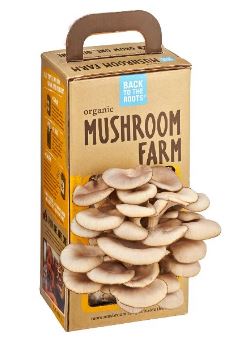
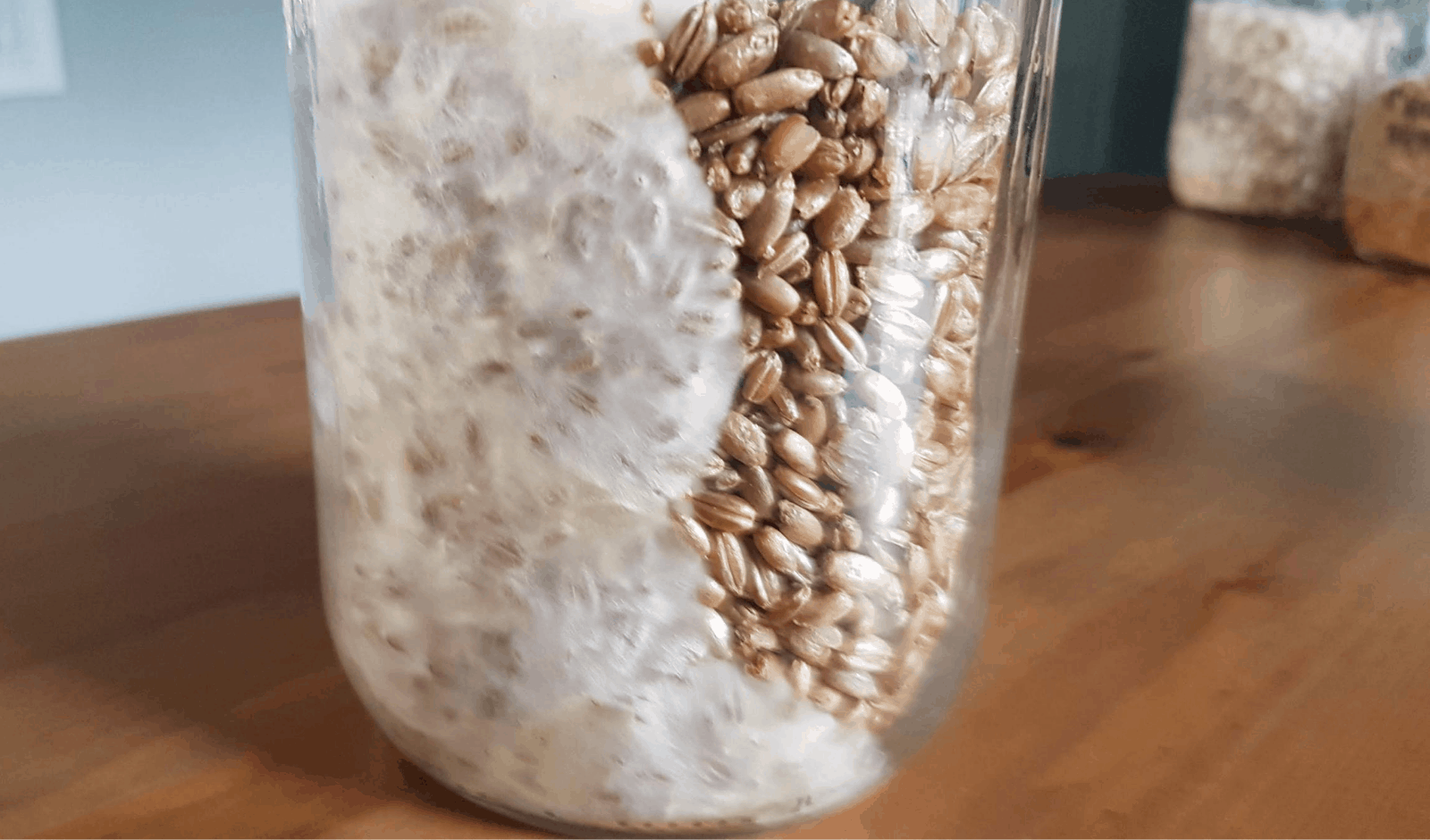
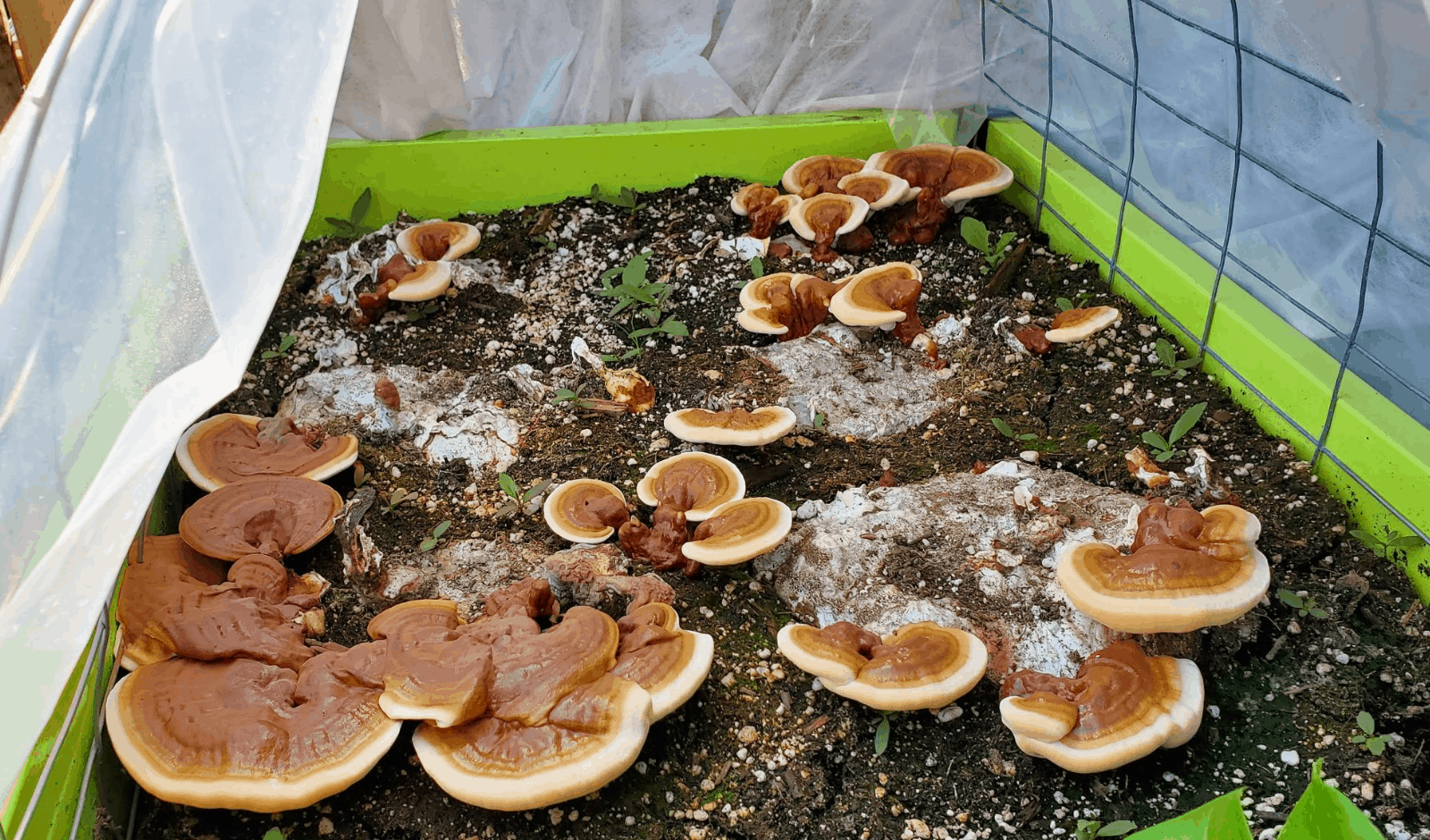
Started using the bucket method. I’m in Michigan. When can I pur my colonized bucket outdoors?
So for an amateur just starting out you would recommend giving the Lion’s Mane kit a try first? The potential health benefits they possess is amazing.
I purchased grey dove dowels for spawn that need to be grown in logs. Can they be grown in other strata like your kits? Not the rye that requires wax dealing.
what is that substrate plz mention substrate compositions
After going through the article, I have cleared some of my concepts but I am a newbie in this field. Can you help me where should I start?
I’m thinking of trying to grow my own mushrooms. Can you tell me how much light is needed and best temperature? I have a cold room that is 52 degrees but does not have natural light. Wondering if that’s needed??